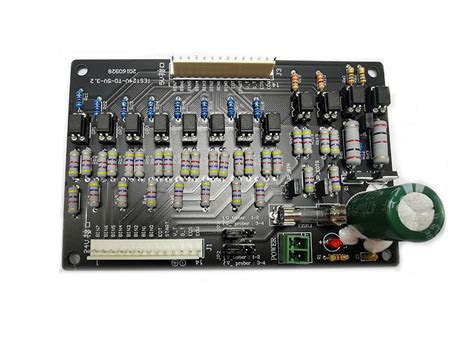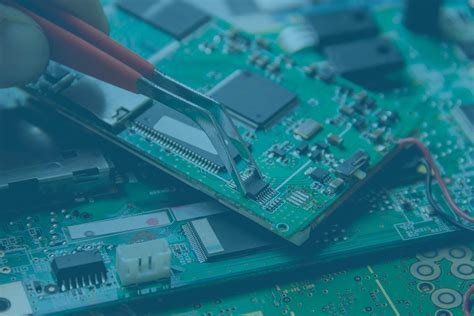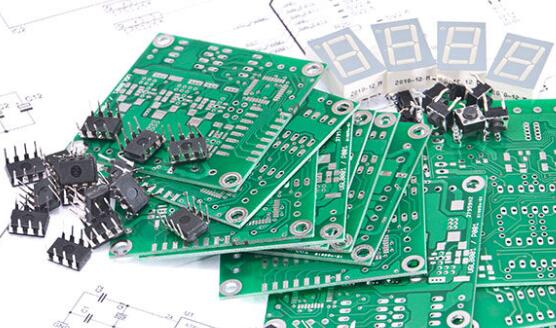Advancements in PCBA Manufacturing Techniques and Trends

Key Takeaways
The pcba manufacturing landscape is rapidly evolving, driven by innovative techniques and a commitment to enhancing efficiency. One standout advancement is the incorporation of automated processes, which streamline the pcb assembly workflow. Automation not only reduces labor costs but also significantly increases precision, leading to fewer defects in the final product. Furthermore, emerging trends such as machine learning and artificial intelligence are enabling manufacturers to analyze production data in real-time, allowing for proactive adjustments that enhance quality.
Another critical aspect of current advancements is the emphasis on sustainable practices. Manufacturers are adopting eco-friendly materials and processes that minimize waste and energy consumption during the pcba production process. This shift not only reduces costs but also appeals to environmentally conscious consumers.
The table below highlights some key strategies and tools enhancing efficiency in pcba manufacturing:
| Strategy | Description |
|---|---|
| Automation | Use of robotic arms for component placement |
| Data Analytics | Real-time monitoring for quality assurance |
| Eco-Friendly Materials | Adoption of biodegradable substances |
| Predictive Maintenance | AI-driven maintenance schedules to prevent equipment failure |
"Investing in innovative practices today ensures a competitive edge tomorrow."
Keeping pace with these advancements is essential for companies wishing to remain relevant in the increasingly competitive electronic assembly sector. The combination of technology integration and sustainable practices promises not only improved efficiency but also a more robust quality assurance framework, paving the way for future growth in pcb assembly industries worldwide.

Introduction to PCBA Manufacturing: An Overview
Printed Circuit Board Assembly (PCBA) is a critical process within the electronics manufacturing industry that combines various components to create functioning electronic devices. The evolution of PCBA manufacturing reflects a continual pursuit of excellence, driven by demands for enhanced performance, reliability, and cost-efficiency. Traditionally, pcb assembly involved many manual processes; however, recent advancements have ushered in a new era marked by innovative technologies and methodologies. Modern pcba processes now leverage high precision equipment and specialized software that allow for greater accuracy and reproducibility. Furthermore, the integration of automation has significantly improved throughput while reducing the potential for human error. As companies strive for competitive advantages in an increasingly global market, understanding these advancements becomes vital for both seasoned professionals and newcomers in the field. The growth of pcba technologies not only paves the way for more complex electronic systems but also aligns with principles of sustainable manufacturing, ensuring that the industry meets contemporary environmental standards. Ultimately, as we delve deeper into this realm, it becomes clear that innovation is not just a trend but a necessity in shaping effective and efficient assembly processes that will define the future landscape of electronics manufacturing.
Innovative Techniques in PCBA Manufacturing
In recent years, the landscape of pcba manufacturing has undergone significant transformation, driven by the adoption of innovative techniques that enhance production efficiency and elevate the standard of electronic assembly. One noteworthy advancement is the integration of automated optical inspection (AOI) systems, which enable rapid detection of defects on pcb assembly lines, thereby ensuring high-quality outputs while reducing the need for extensive manual checks. Additionally, the shift toward multi-layer PCB designs has catalyzed developments in solder paste application technologies, allowing for more precise application and improved soldering results.
Another pioneering technique gaining traction is additive manufacturing, which facilitates the creation of complex PCB structures with minimal waste—a crucial factor in today’s environmentally conscious manufacturing landscape. The use of laser direct imaging (LDI) also represents a leap forward; this approach ensures high resolution when transferring images onto PCBs, resulting in more intricate circuit designs that can accommodate advanced functionalities. Moreover, advancements in material science have led to the production of new substrates that offer better thermal management and electrical performance.
Collectively, these innovations not only streamline operations but also inspire greater flexibility in design and assembly processes. As manufacturers increasingly embrace these cutting-edge techniques in pcba, they set the stage for a more efficient and sustainable future within the electronics assembly industry.

The Role of Automation and Robotics in PCBA Production
In the rapidly evolving landscape of PCBA manufacturing, the integration of automation and robotics has become a pivotal factor in optimizing production processes. Automation allows for the streamlining of various stages in the pcb assembly line, significantly enhancing efficiency and precision. With advanced robotic systems, tasks such as component placement, soldering, and inspection have transitioned from manual to automated functions. This shift not only minimizes human error but also increases speed, allowing for larger production volumes within shorter timeframes. Additionally, robotics can operate continuously with little downtime, which is crucial for keeping up with the growing demands in the electronics assembly industry. This technological evolution is complemented by sophisticated software solutions that enable real-time monitoring and data analysis, leading to improved decision-making processes throughout production cycles. As manufacturers adopt these innovative tools, they can achieve a higher level of consistency and quality in their pcba products, ultimately reinforcing their competitive edge in a saturated market. The transformative impact of automation and robotics is evident as these technologies continue to reshape the landscape of pcb assembly, paving the way for unprecedented advancements in productivity and operational effectiveness.
Emerging Trends Shaping the Future of PCBA Manufacturing
As the landscape of PCBA manufacturing continues to evolve, several emerging trends are significantly influencing the industry. One major trend is the increased use of automation and robotics, which enhance production speed and consistency while minimizing human error. This advancement allows manufacturers to handle complex assemblies with ease, thereby improving process efficiency. Additionally, as miniaturization becomes more prevalent, the demand for highly detailed and compact pcb assembly solutions is rising. This shift has led to innovations in materials and techniques, such as flexible PCBs, which cater to modern electronic devices’ design requirements.
Another noteworthy trend is the integration of sustainability practices into production processes, reducing resource consumption and waste in PCBA manufacturing. Companies are increasingly focusing on eco-friendly materials and processes that align with consumer expectations for sustainable products. Furthermore, advancements in communication technologies enable real-time monitoring and analysis of production environments, paving the way for smarter decision-making.
Lastly, as we approach a new era characterized by Industry 4.0, data-driven insights will play a crucial role in optimizing supply chains and enhancing quality control measures within pcb assembly operations. Collectively, these trends are reshaping PCBA manufacturing, driving improvements in efficiency, cost-effectiveness, and product quality that will define the future of this vital industry.
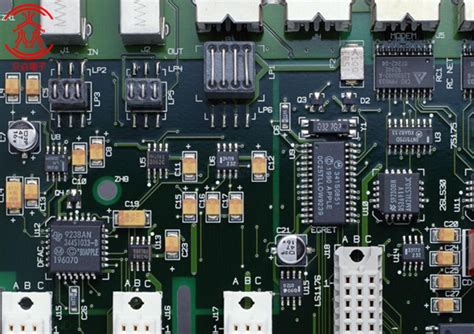
Cost-Reduction Strategies in the Electronics Assembly Process
Effective cost-reduction strategies in the electronics assembly process are essential for maintaining competitiveness and profitability within the PCBA industry. One prominent approach is the adoption of lean manufacturing principles, which focus on minimizing waste while maximizing productivity. By streamlining operations and implementing just-in-time inventory systems, manufacturers can significantly reduce excess costs associated with storage and materials. Furthermore, investing in automation technologies not only optimizes production efficiency but also lowers labor costs over time. Another viable strategy involves utilizing advanced materials and components that offer a better performance-to-cost ratio, ultimately enhancing the overall quality of the PCB assembly without inflating costs. Collaboration with suppliers to negotiate bulk purchasing deals can also contribute to significant savings, allowing manufacturers to take advantage of economies of scale. It is important to analyze the entire production workflow diligently; identifying bottlenecks can lead to refined processes that ultimately yield cost-effective solutions while ensuring that quality remains paramount in every facet of PCBA manufacturing.
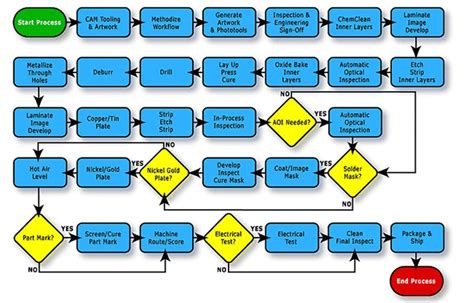
Quality Control Advances in PCBA Manufacturing
In the fast-evolving field of pcba manufacturing, quality control plays a pivotal role in ensuring the reliability and performance of electronic products. Recent advancements are integrating more sophisticated tools and methodologies to enhance pcb assembly processes. Techniques such as Automated Optical Inspection (AOI) and X-ray inspection have gained prominence, enabling manufacturers to detect defects at an early stage. These technologies not only identify visual flaws but also assess solder joint integrity, which is crucial for the longevity of electronic assemblies. Furthermore, the introduction of machine learning algorithms facilitates predictive analytics that can foresee quality issues before they arise. This proactive approach to quality control results in reduced rework costs and improved production throughput. Additionally, leveraging data analytics allows manufacturers to continuously refine their processes based on past performance metrics. As a result, manufacturers can achieve higher levels of consistency and quality assurance in pcba production, ultimately leading to increased customer satisfaction and trust in their products. Emphasizing a culture of quality across all stages – from design to assembly – ensures that pcb assembly not only meets industry standards but also exceeds consumer expectations in an increasingly competitive landscape.
The Impact of Industry 4.0 on PCB Assembly Techniques
The advent of Industry 4.0 is revolutionizing PCB assembly processes in significant ways, enhancing the efficiency and effectiveness of PCBA operations. Smart manufacturing, characterized by the integration of advanced technologies such as the Internet of Things (IoT), artificial intelligence (AI), and big data analytics, is enabling real-time monitoring and optimization in PCBA production lines. These innovations facilitate predictive maintenance, which helps reduce downtime and increases overall productivity. Additionally, through automation and robotics, manufacturers can achieve greater precision and consistency in their assembly processes. The use of collaborative robots—often referred to as cobots—allows human operators to work safely alongside machines, combining human ingenuity with robotic efficiency to further streamline production workflows. Moreover, data analytics provides insights into production metrics that empower manufacturers to make informed decisions about resource allocation and inventory management. As a result, companies in the electronic assembly industry are not only able to enhance product quality but also reduce operational costs significantly. In this era marked by rapid technological evolution, embracing these Industry 4.0 principles is vital for staying competitive within the PCB assembly landscape.
Conclusion: The Future of PCBA Manufacturing
As PCBA manufacturing continues to evolve, it is evident that the integration of cutting-edge technologies and innovative practices will define its future. The implementation of advanced automation and robotics is already transforming the pcb assembly landscape, leading to increased production speeds and improved precision. Furthermore, these innovations are closely linked to the ongoing trends in Industry 4.0, which emphasize connectivity and data-driven decision-making processes. By utilizing real-time analytics and smart manufacturing systems, companies can enhance efficiency while simultaneously reducing waste and operational costs. As emerging trends such as eco-friendly materials and sustainable practices gain traction, the competitive edge within the pcba field will rely heavily on adaptability and forward-thinking policies. Overall, the future holds promising developments that can significantly elevate not only the quality of pcba outputs but also the overall reliability of electronic devices in various applications across industries.
Conclusion: The Future of PCBA Manufacturing
As the landscape of PCBA manufacturing continues to evolve, it becomes increasingly essential to keep pace with the myriad of advancements that are reshaping the industry. The integration of automation and robotics has redefined pcb assembly, enabling more precise and swift operations, which not only enhance production efficiency but also significantly reduce the margin for error. Moreover, emerging technologies like artificial intelligence and machine learning are propelling quality control measures, ensuring that each batch of pcba products meets stringent quality standards. These innovations are complemented by a growing trend towards sustainability, with manufacturers seeking eco-friendly materials and processes to minimize environmental impact. The future promises further advancements in pcba methods that leverage real-time data analytics and adaptive manufacturing processes, ultimately leading to lower costs and improved responsiveness to market demands. In this rapidly changing environment, those engaged in pcb assembly must remain agile, embracing these trends to thrive in a competitive market landscape. Collaboration among stakeholders will be crucial in driving these developments forward while ensuring that quality standards remain uncompromised.

FAQs
What is PCBA manufacturing?
PCBA manufacturing refers to the process of assembling printed circuit boards (PCBs) with various electronic components to create functional electronic devices. This involves several stages, including soldering components onto the board, testing the assembly, and ensuring quality control throughout the process.
What are the advantages of PCB assembly techniques?
Advanced PCB assembly techniques enhance efficiency by streamlining production, reduce costs through automation and optimized processes, and improve quality with new materials and methods that ensure robust electronic connections.
How has automation affected PCBA production?
Automation in PCBA production has significantly increased speed and accuracy. Robotics are now utilized for tasks such as soldering and component placement, which minimizes human error and maximizes efficiency in high-volume manufacturing settings.
What are some emerging trends in PCBA manufacturing?
Emerging trends include smart manufacturing practices driven by Industry 4.0, increased incorporation of artificial intelligence for quality assurance, and a focus on sustainable practices that use eco-friendly materials and processes in pcba production.
How does Industry 4.0 influence PCB assembly techniques?
Industry 4.0 revolutionizes PCB assembly by introducing connectivity across machines which allows real-time data exchange. This advancement leads to predictive maintenance, greater flexibility in production lines, and improved products through data-driven insights.
For additional information on pcb assembly, please click here: https://www.andwinpcb.com/pcb-assembly/

